The Story of Palm Beach: An Insider’s Guide to the Luxury Resort Destination
Luxury Defined spotlights America’s first luxury lifestyle resort destination, the glittering location of the 2020 Christie’s International Real Estate Owners Conference
Luxury Defined spotlights America’s first luxury lifestyle resort destination, the glittering location of the 2020 Christie’s International Real Estate Owners Conference
Our Palm Beach story begins in the late 19th century in the mind of Henry Morrison Flagler, a co-founder of Standard Oil. Flagler realized that Florida was an untapped tourism resource while honeymooning in historic St. Augustine. There he built his first hotel, the 540-room Ponce de Leon, a hit from the day it opened in 1888.
Flagler built, bought, and consolidated railroads south to expand his hotel business in Florida’s “wilderness of waterless sand and underbrush.” In 1894, his train tracks reached what others might call a rather nondescript, 12-mile-long barrier island. But he saw an American Riviera. It would become known as Palm Beach, and the greatest of the grand hotels he built there would become The Breakers.
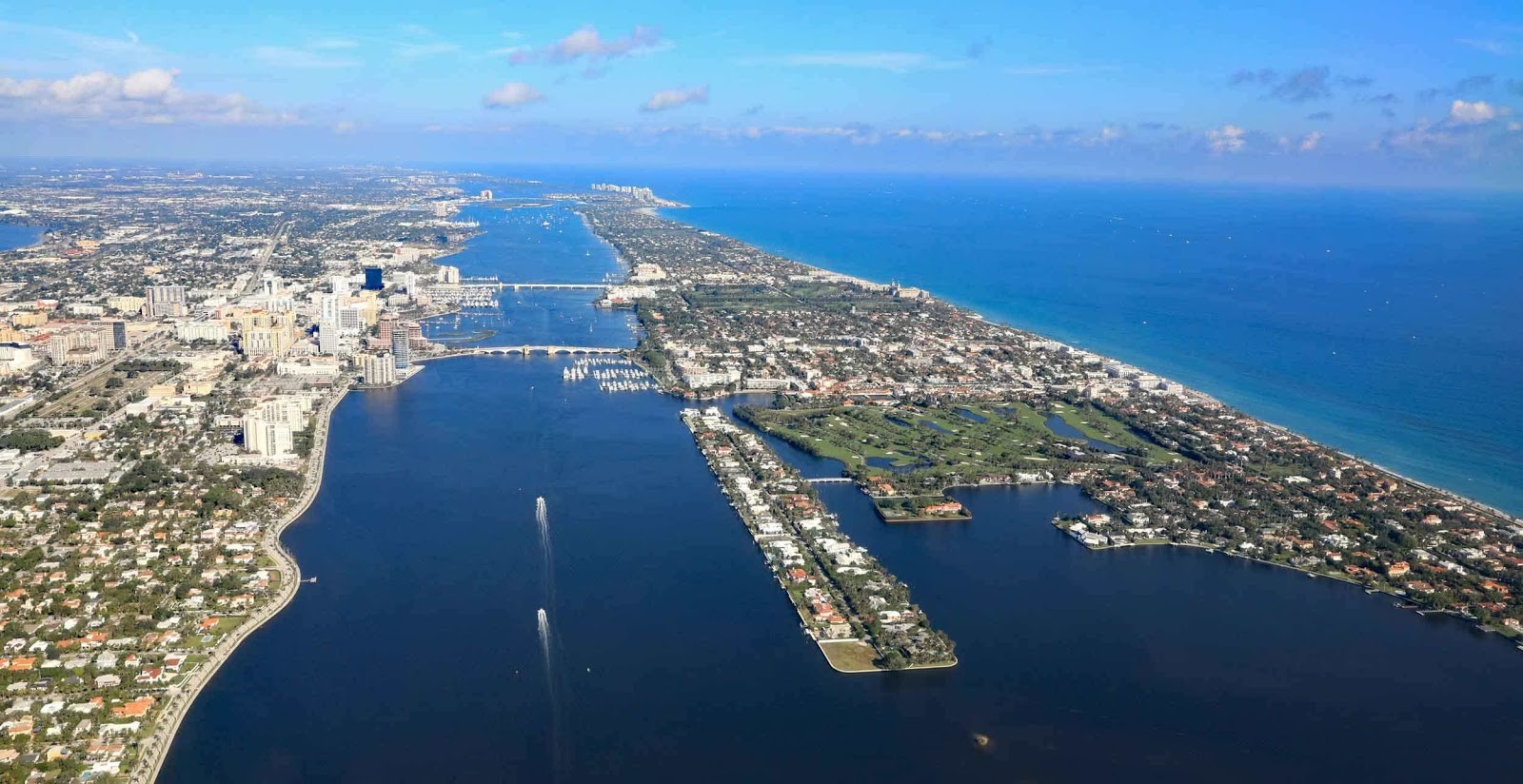
The Palm Beach Lifestyle
On the island’s widest stretch of sand is the Four Seasons Resort Palm Beach, where Christie’s International Real Estate will hold its 2020 Owners Conference on February 24-26. The renovated, five-star, five-diamond beachfront resort takes its inspiration from the island’s glamorous lifestyle and architectural heritage.
“The Four Seasons Resort Palm Beach has one of the best locations in Palm Beach,” says Carmen D’Angelo, Broker/Owner of Premier Estate Properties, the exclusive Affiliate of Christie’s International Real Estate in the region.
“Palm Beach proves so appropriate for this year’s global conference. This locale is known for its magnificent estates, beautiful beaches and premier boutiques, galleries, and restaurants,” says Dan Conn, Chief Executive Officer of Christie’s International Real Estate. “The collaboration and exchange of ideas over the two days of meetings, through both guest speakers and networking opportunities, provides our Affiliates with strategies to strengthen and grow their luxury businesses using Christie’s International Real Estate to benefit their local buyers and sellers.”
The conference begins with a welcome event poolside at the Four Seasons Resort Palm Beach on Monday, February 24. The following morning, a full day of programming commences with a breakfast in the Four Seasons’ Flagler Ballroom. Another full day of programming on Wednesday concludes with the marquee event, an awards dinner honoring the Christie’s International Real Estate Affiliates of the Year at The Flagler Museum, formerly known as Whitehall, the magnificent Gilded Age estate of Henry Morrison Flagler.

The Breakers
Mr. Flagler’s railroad reached West Palm Beach in 1894. His newly completed, 1,100-room Royal Poinciana, a Gilded Age hotel in the Georgian style, became the largest wood-frame structure in the world. A spur line reached all the way to the hotel, so that the wealthier guests could pull up in their private railcars and stroll to their rooms. Within two years, the Royal Poinciana would be eclipsed by his greatest architectural achievement: The Breakers.
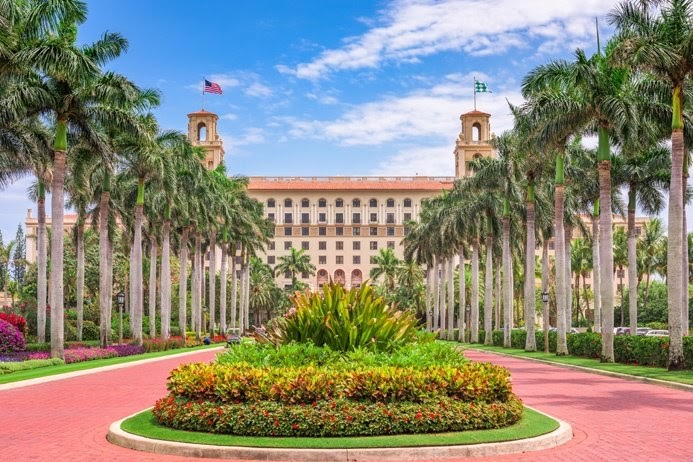
The grandest of the grand hotels, built in 1896 as the Palm Beach Inn, was renamed for its enviable oceanfront setting, and because guests kept asking for seaside rooms across the Lake Worth Lagoon, “over by the breakers.” Those guests were a who’s who of American high society: Rockefellers, Vanderbilts, Astors, Andrew Carnegie, J.P. Morgan, and Henry James. Old money and new bought into the Palm Beach dream.
Flagler died in 1913 before seeing the Mediterranean-style masterpiece that stands today. Rebuilt by his heirs in time for the 1926 winter season, the building was hailed by Fortune magazine as “undoubtedly the finest resort hotel in the world.” Its grand Italian Renaissance façade, modeled after Rome’s Villa Medici, encloses a gilded interior adorned with marble floors, frescoes, and hand-painted ceilings with Venetian chandeliers. Surrounding the hotel are 140 acres of immaculate grounds. Multimillion-dollar refurbishments have added a spa, beach club, tennis center and golf clubhouse, and a redesign of its famous Ocean Course—Florida’s oldest 18-hole golf course.
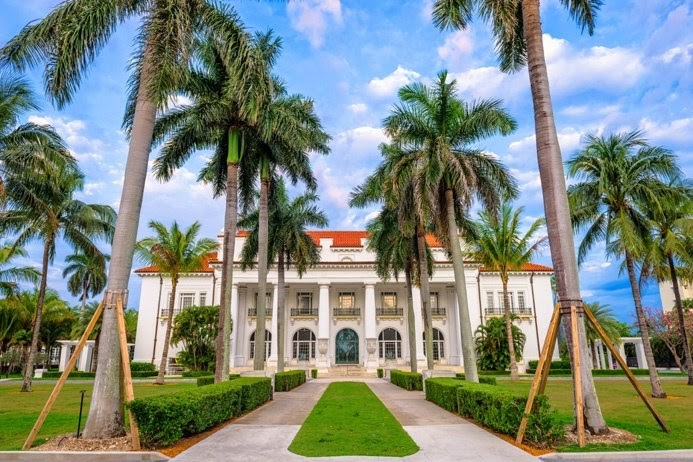
The Winter Season
The original Palm Beach social season ran between mid-December to February 23, the day after Flagler’s annual George Washington Ball at his mansion, Whitehall (now the Flagler Museum). Today, “the season” runs from December to April. The social calendar ranges from glittering galas, charity benefits and auctions to internationally renowned art fairs, including January’s Palm Beach Contemporary + Modern.
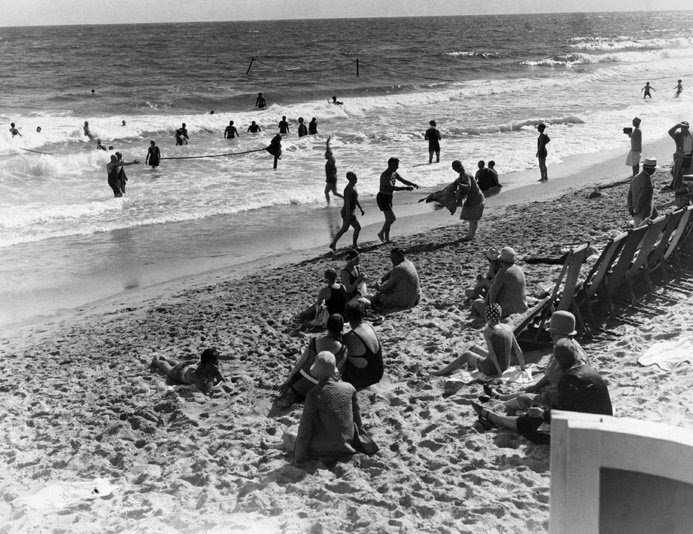
Mar-a-Lago
The Roaring Twenties’ Jazz Age optimism took shape in the over-the-top architecture of Mar-a-Lago, decades before it became the private club and “Winter White House” for the 45th president of the United States. Mar-a-Lago was built for cereal heiress Marjorie Merriweather Post, who named it after the Spanish for “sea to lake”—its spectacular site on 17 acres between the Atlantic Ocean and Lake Worth. Donald Trump purchased Mar-a-Lago in 1985 and, a decade later, transformed the estate into a members-only club with guest rooms, a grand ballroom, and resort amenities. It is the last estate of its era to remain almost entirely intact.
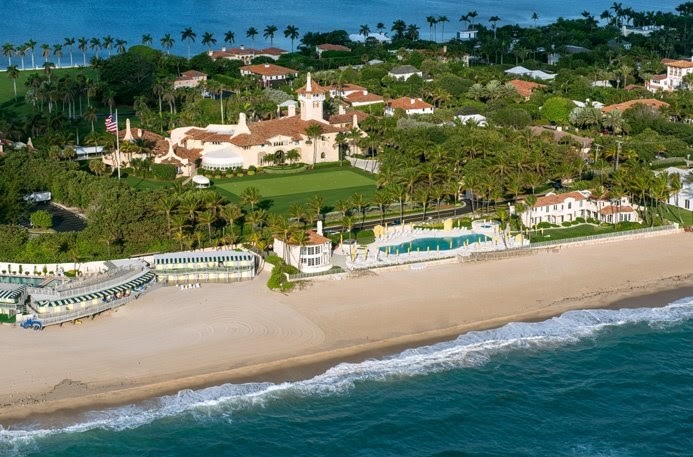
The Sporting Set
The barrier island’s 12 miles of shoreline offer pristine beaches and access to boating, fishing, and water sports. Exclusive members-only clubs like Mar-a-Lago, Palm Beach Bath and Tennis Club, and the Everglades Club offer five-star recreation. There are world-class sporting events at the Winter Equestrian Festival, at Palm Beach Equestrian Center, the International Polo Season, at Palm Beach Polo, Golf and Country Club, in Wellington, as well as the Honda Classic golf tournament in nearby Palm Beach Gardens.
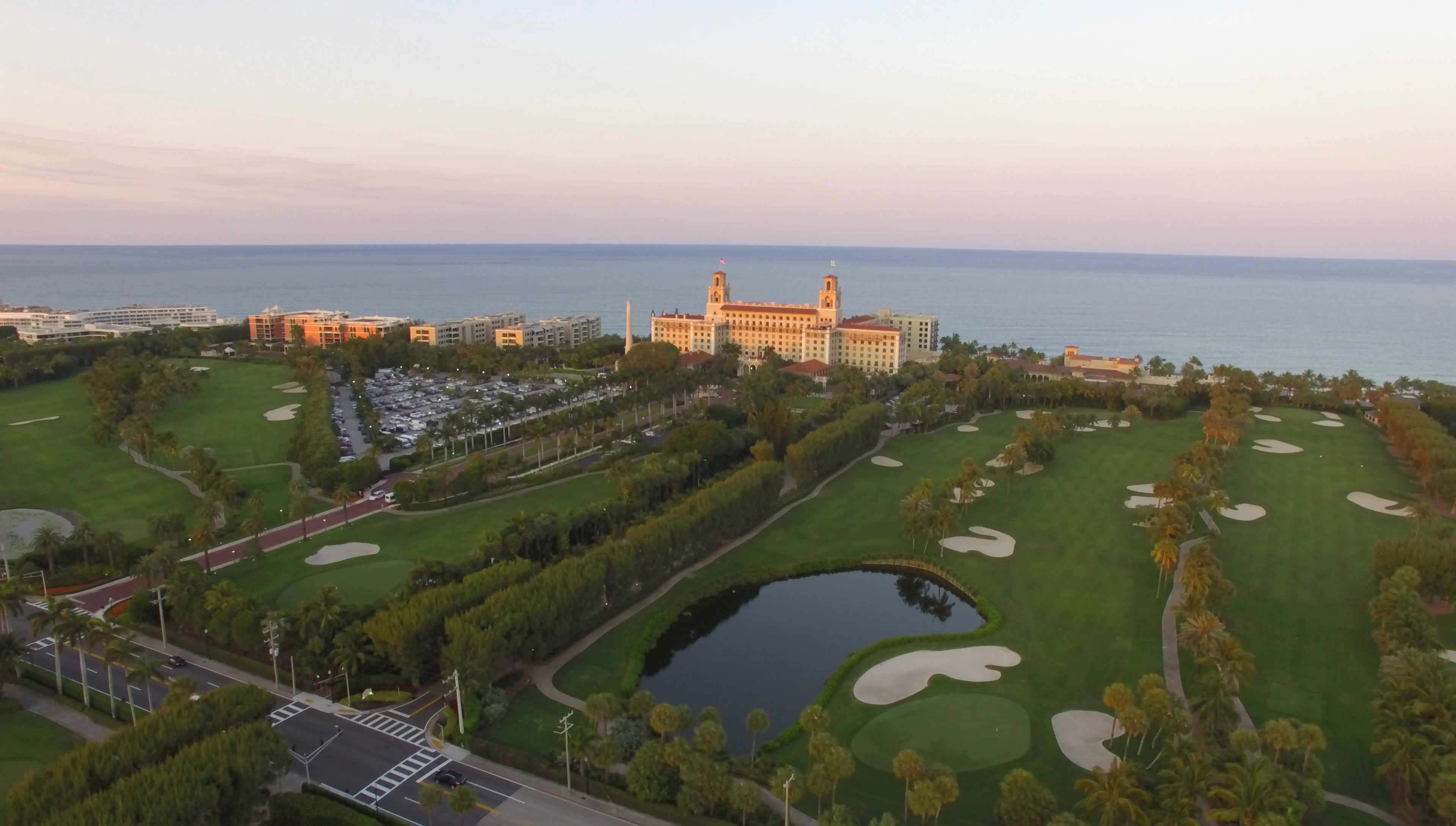
Arts and Culture
Palm Beach County is also known for its cultural institutions: In addition to the Henry Flagler Museum there are The Society of the Four Arts, the Palm Beach Preservation Foundation, and Florida’s largest museum, The Norton Museum of Art in West Palm Beach. In February 2019, the Norton completed an expansion designed by Pritzker Prize-winning “starchitect” Sir Norman Foster. Current exhibits at the Norton include new works from the Richman collection of American impressionism and realism; Asian and Latin American art; landscape photography; and Robert Rauschenberg: Five Decades from the Whitney’s Collection. Gavlak Gallery and DTR Modern Galleries offer a showcase of modernist and contemporary art. In downtown West Palm Beach is the historic home, studio, and exhibition galleries of the celebrated sculptor Ann Weaver Norton. Her two-acre sculpture gardens on the Intracoastal Waterway are planted with 250 species of tropical palms.

Retail Therapy
Palm Beach is a shopping mecca. Fashion emporiums such as Chanel, Gucci, Ralph Lauren, St. John, and Salvatore Ferragamo line Worth Avenue, that famous thoroughfare which rivals Fifth Avenue in New York and Rodeo Drive in Beverly Hills. The John Volk-designed Royal Poinciana Plaza with its elegant palm-lined courtyard is yet another luxury retail destination. In addition to boutiques such as Zadig & Voltaire, Hermès, Kiton, and Saint Laurent, there are bistros and bars, art galleries, a Pilates studio, salons, and a holistic medi-spa.
Fine Dining
Buccan, the flagship of chef Clay Conley’s Palm Beach restaurant empire, serves classic American fare with a contemporary twist. Next door is Buccan’s “little sister,” the Japanese-inspired Imoto. Other island hot spots include Chef Daniel Boulud’s classic French venue Café Boulud; the romantic Café L’Europe; upscale steakhouse Capital Grille in Palm Beach Gardens; and, the “haute country kitchen” of Chez Jean-Pierre Bistro (a people-watcher’s paradise). Book ahead to ensure a table—and a truly great meal.
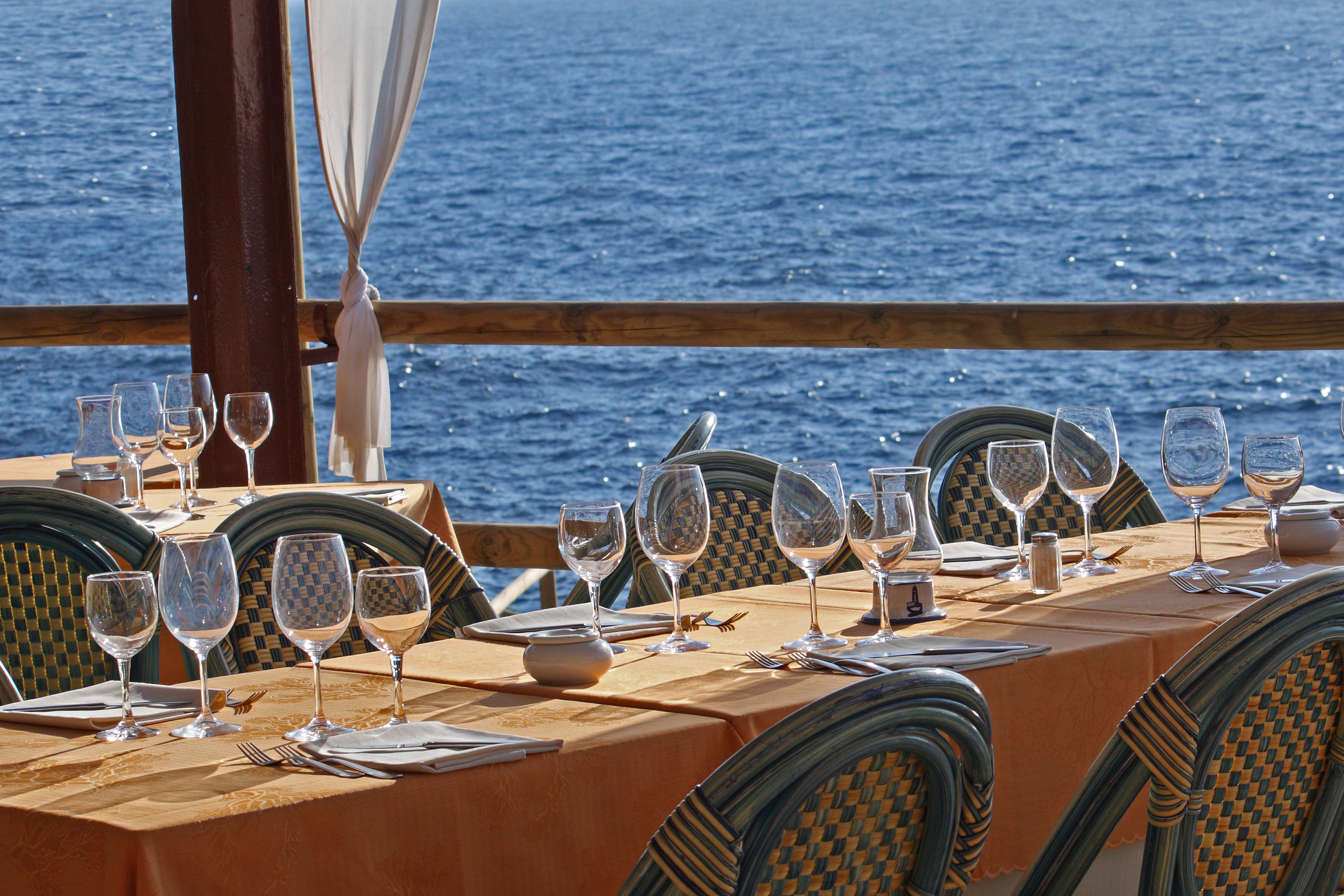
An End to the Palm Beach Story?
En route to its terminus in Key West, Flagler’s railroad reached Biscayne Bay. There, the residents wanted to incorporate a city in his name, but the millionaire demurred. Who would want to live in a city named Flagler? He instead suggested an old name derived from the region’s Native American tribe and the river that flows through town. It caught on with the locals:
Miami.
But that is another story.